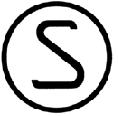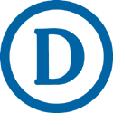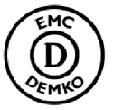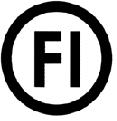Certification Marks
Certification Marks
As consumers become more informed of the quality and products that are being sold in the market, the use of certification marks has become a standard for many manufacturers to enhance their image and customer perception of their products.
Some of the marks are not mandatory and some are. For example, most products that are sold in the North America market will have UL mark on them even though it may not be mandatory. It has in a way become a standard in this part of the market to have this marking.
The use of certification marks indicates that the product has gone through successful test based on a certain test standards for that particular product. It also assured the consumers that the manufacturer is being regularly audited on the materials and production processes to ensure that the standards are being adhered to.
As it takes quite a substantial amount of cost to place certification marks on the products that are being manufactured, only serious and sizable companies are able to do this. It is therefore critical for the management to identify and study the product life cycle and the market before deciding to apply for the marking.
You will be able to see some of the markings in the products that you purchased. Toys, electrical goods and other electronic products most probably will have some of these markings. Some of the markings and their descriptions are provided below.
UL Listing Mark

A product that has this mark indicates that Underwriters Laboratories had tested the samples of these product and passed the UL safety requirements.
The standards used are based on UL published Standard for Safety and can be purchased from UL. This is the most common UL Marks and they are found in home appliances equipment, IT products such as computers and monitors many other products.
C-UL Listing Mark

A product that has this mark indicates that Underwriters Laboratories had tested the samples of these product and passed the Canada safety requirements. The standards used are based on Canada published Standard for Safety and can be purchased from UL.
Recognized Component Mark(US and Canada)

The UL Recognized Component Mark as shown above is used for components which are tested and certified by UL to both Canadian and U.S. requirements. Individual markings for U.S. or Canada requirements are also available.
VDE Mark

VDE Mark as shown above are used for appliances as technical equipment in accordance to Appliance Safety Law (GSG), Medical Device Law (MPG), components and installation materials. This mark indicates that the equipment conforms to VDE standards or European or internationally harmonized standards.
VDE EMC Mark

The VDE EMC Mark is used for appliances that comply with the EMC(Electromagnetic Compatibility) product standards.
SEMKO Mark

The S marking indicates that the product has been tested by SEMKO, an independent testing laboratory from Sweden. It certifies that the product meets the safety requirements.
DEMKO Mark

The D marking indicates that the product has been tested by DEMKO and it certifies that the product meets the safety requirements.
DEMKO EMC Mark

DEMKO EMC Mark indicates that the product samples have passed the EMC testing conducted by DEMKO, a competent body for EMC directive testing.
NEMKO Mark

The N mark indicates that NEMKO has tested the product according to the national standards safety regulations in Norway. It Shows that the product have been certified based on safety requirements and if relevant, also compliant with the EMC Directive.
NEMKO EMC Mark

The NEMKO EMC Mark indicates that the product has been tested for both safety and EMC by NEMKO or its authorized laboratory.
FIMKO Mark

The SGS FIMKO F1 Mark is an independent certification mark that shows that the product has passed the safety and quality requirements.
FIMKO EMC Mark

The FIMKO EMC Mark indicates that the product fulfills the requirements of EMC Directive and has been tested according to the standards in a test laboratory which has been approved by SGS FIMKO.
Energy Star Mark

ENERGY STAR mark indicates that the product has been designed with energy efficiency in mind. It is created by U.S. Environmental Protection Agency and the U.S. Department of Energy to help consumers save money and prevent air pollution.



New! Comments
Have your say about what you just read! Leave us a comment in the box below.